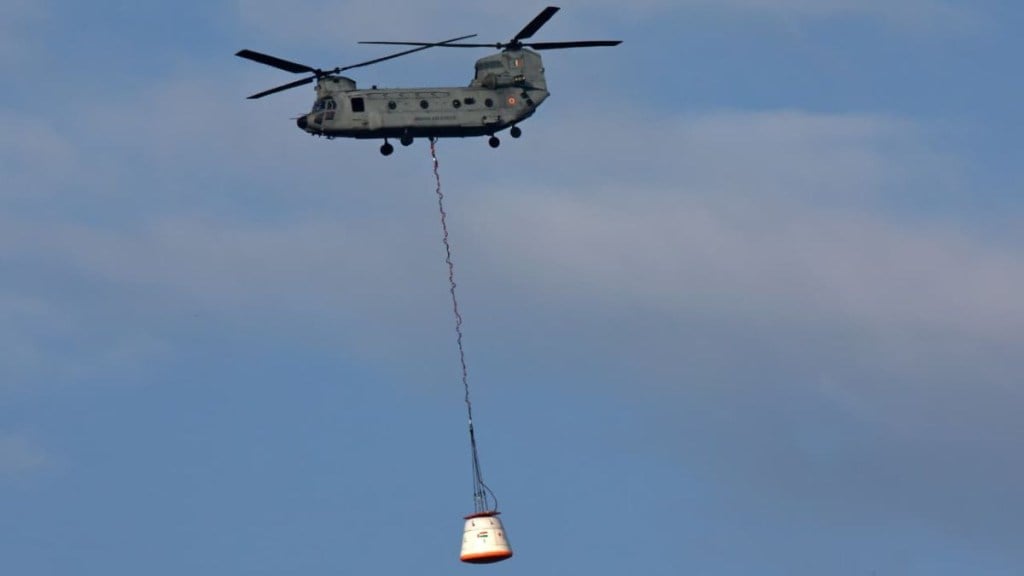The Indian Space Research Organisation (ISRO) has successfully conducted its first Integrated Air Drop Test (IADT-1), marking a pivotal moment in the nation’s human spaceflight programme, Gaganyaan. This test was designed to test the parachute-based deceleration system that will be used to safely recover astronauts after re-entry.
Simulating Real-World Descent Conditions
The test involved lifting a dummy crew capsule weighing approximately five tonnes using a Chinook helicopter. Once released from several kilometers above ground, the capsule descended while its parachutes deployed in a precise sequence. This sequence is important to slowing the capsule for a safe splashdown speed, mimicking the final stages of an actual crewed mission.
In a real Gaganyaan flight, the capsule will first be slowed by heat shields and drogue parachutes before the main parachutes are triggered. These final phases—re-entry, descent, and splashdown—are considered the most hazardous for astronauts, making the reliability of the parachute system essential for mission success.
A Coordinated National Effort
The IADT-1 test was not just a technical demonstration but a collaborative effort involving multiple national agencies. The Indian Air Force, Defence Research and Development Organisation (DRDO), Indian Navy, and Coast Guard all played key roles in ensuring the success of the trial. This coordination reflects India’s commitment to human-rating its launch and recovery systems.
Gaganyaan Preparations Near Completion
Union Minister of State for Science and Technology, Jitendra Singh, recently informed the Lok Sabha that major components of the Gaganyaan mission have already been developed and tested. These include propulsion systems for both the crew and service modules, an engineering model of the environmental control and life support system, and five types of motors for the Crew Escape System (CES), all of which have undergone static testing.
Infrastructure and Module Readiness
Significant infrastructure has been established to support the mission, including the Orbital Module Preparation Facility, Gaganyaan Control Centre, crew training facility, and modifications to the second launch pad. Ahead of the first uncrewed mission, designated G1, key components such as the C32-G stage, CES motors, HS200 motors, and the CES fore-end have been realized. The crew and service module structures are complete, and phase-1 checks for the crew module have been successfully conducted.








